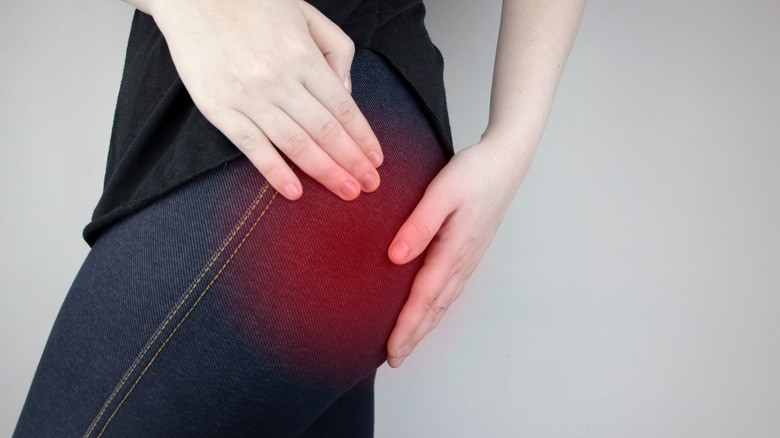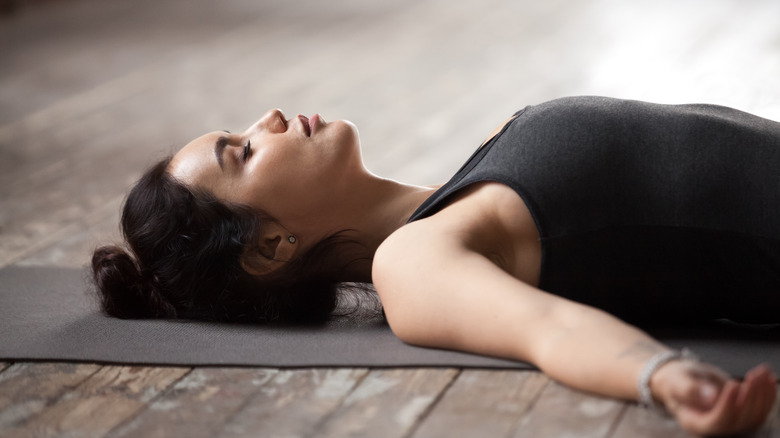How To Treat And Heal A 'Yoga Butt'
People might be drawn to yoga to get a firm yoga butt. However, a yoga butt is an injury called proximal hamstring tendinopathy, according to Healthline. You'll feel it as a strain at or below your sitting bones, where your hamstring attaches. If your hamstring muscles are weak, other stabilizers in the hip have to pick up the slack. Unfortunately, when your tendons are forced to do more work, they can easily get tight and tear. This is because tendons don't have the same elasticity as muscles, and they take longer to heal, according to Yoga Journal.
Yoga butt usually doesn't happen during a single class (via Healthline). Instead, it's an overuse injury that occurs when you spend too long in deep forward folds, compass pose, or splits. Yoga styles, such as ashtanga and vinyasa, often have repetitive poses that can cause yoga butt, explains Women's Health. If you experience yoga butt, you don't have to give up your favorite yoga class. You'll just have to make some adjustments to your practice.
Modifying your yoga practice for yoga butt
If your yoga butt is excessively painful, you might need to see a doctor or physical therapist, according to Women's Health. However, if the pain isn't too intense, it's best to either rest or look into other yoga practices, like restorative yoga. You'll need to avoid stretching since yoga butt is a result of overstretching. In addition, some may wear a compression sleeve or strap around their upper thigh so they don't strain their hamstrings (via Healthline). Luckily, many can eventually build their hamstring strength without strain through isometric exercises, like locust or side plank.
Once the pain is gone, it's time to work on your glute and hamstring strength. Sport Doctor London suggests single and double-leg bridges and walking lunges with weights. In addition, single-leg squats and side-stepping with a band will also improve your strength.
When you're ready to resume a stronger yoga practice, Yoga Journal advises using blocks under your hands for poses, such as low lunge and pyramid. The blocks will help stabilize you as you strengthen and lengthen your hamstrings. Try engaging your quads to help stabilize you, and be sure not to lock out your knee. Yoga is about knowing your edge, so be sure not to go past it (via Healthline).


